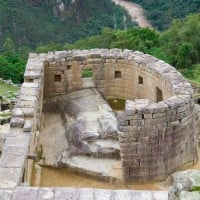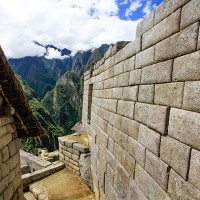Top 10 Fun Facts About Machu Picchu
Machu Picchu is a popular tourist site in South America. It stands out for its location and the nature surrounding it, which make the citadel beautiful to many. It is located in a cloud forest in the Andes Mountains in Peru.The citadel comprises a unique kind of architecture that the Incas, who lived there, designed. To top off its beauty, the area is dominated by many llamas and alpacas that many visitors often admire.
Machu Picchu is not only a site that is considered to be beautiful by many, but also a place of mystery. Since Hiram Bingham III publicized Machu Picchu's existence to the world, there have been many studies and visits to the citadel.
Considering the citadel was built during the rule of the Inca Empire, alongside a plausibly noticeable theme within the buildings and its placement, many believe that it had a connection to the purpose of the citadel.
Because of all this, including the Incas having a unique way of life, which includes their communication and methods of construction, Machu Picchu has for a long time remained a site of beauty and wonder to many people.
So, get ready for some fun facts about this unique and mysterious site in Peru.

What Machu Picchu was built for remains unknown, because there were no written records from the Incas. They did not have a written language. Instead, they used Quipus, a series of knots and ropes, along with their spoken language, Quechua.
Historians and archaeologists believe that Machu Picchu was built as a royal estate for Inca Emperor Pachacuti Inca Yupanqui. Others believe it was a holy city for religious Incas to worship deities like the Sun or Inti, indicated by the presence of temples within the city. The buildings featured windows, likely enabling Incas to observe significant astronomical events.
Another common belief is that the city served agricultural purposes. The Incas, expert agriculturalists, used terraced farming to feed their community.

Despite their popularity among tourists at Machu Picchu, llamas are not native to the area. They were brought there from other parts of the Andean region by the Incas for purposes such as transporting goods and materials. While llamas are native to the Andean region, they typically inhabit altitudes up to 13,000 feet above sea level or higher.
Today, llamas are one of the dominant non-native animals in the Machu Picchu area and are a significant attraction for visitors. The same applies to alpacas. Although popular, they are not native and were also brought to Machu Picchu by the Incas.

Because Machu Picchu was built close to two fault lines, the Incas knew they had to use various methods to make Machu Picchu earthquake-proof. One of the methods they used was the ashlar technique, which comprised the cutting of rocks precise enough that there was no space between the rocks when placed on top of each other. Not even a piece of paper could fit between the rocks.
Other methods included making trapezoid-shaped doors and windows and walls that inclined inward.
Although explorer Hiram Bingham publicized Machu Picchu's existence, it was not truly a lost place even before his arrival in 1911. Initially, Bingham intended to look for Vilcabamba, the last Inca village used to protect refugees from the Spanish conquest. During his journey through the Sacred Valley, he inquired about any nearby ruins from the locals.
One local, known as Melchor Artega, communicated in his native language and led Bingham to the city of Machu Picchu. Despite being forgotten by the outside world after the Spanish conquests, Machu Picchu still had inhabitants at the time of Bingham's arrival. Bingham's discovery significantly sparked studies and visits to this historic site.
During their time, the Incas had a considerably advanced water system. Other than relying on rain, the Incas needed a way to supply water to their community. Thus, they built underground canals to channel water and direct it to fountains for consumption and ceremonial purposes, and built drains for flood control.
Water was also a necessity for the Incas as they needed it to grow their crops to feed people in their community.
Many Inca sites, including Ollantaytambo, were destroyed during the Spanish conquests. However, Machu Picchu was built in a secluded location, which spared it from destruction. Despite this, the citadel was eventually abandoned for reasons that remain unknown today.
As mentioned, there were no written records, thus there is no definite answer as to when Machu Picchu was built. However, scholars estimate that Machu Picchu was constructed around 1450 AD during the reign of Pachacuti Inca Yupanqui, who led the Inca Empire from 1438 to 1471.
Despite the introduction of the Spanish language in the 16th century, many people in the Andean region speak a native language called Quechua. Quechua is used to name this citadel. In Quechua, "Machu" means "old" or "old person," while "Picchu" translates to "mountain" in English.
Helicopter tours were once permitted in the Machu Picchu area until 2010. The Cusco Province banned helicopters from flying over the area due to the noise pollution they produced, which disrupted the indigenous life.
While the exact number of people who resided in the Machu Picchu citadel is unknown, it is estimated that between 300 and 1,000 people lived there in the 15th century.